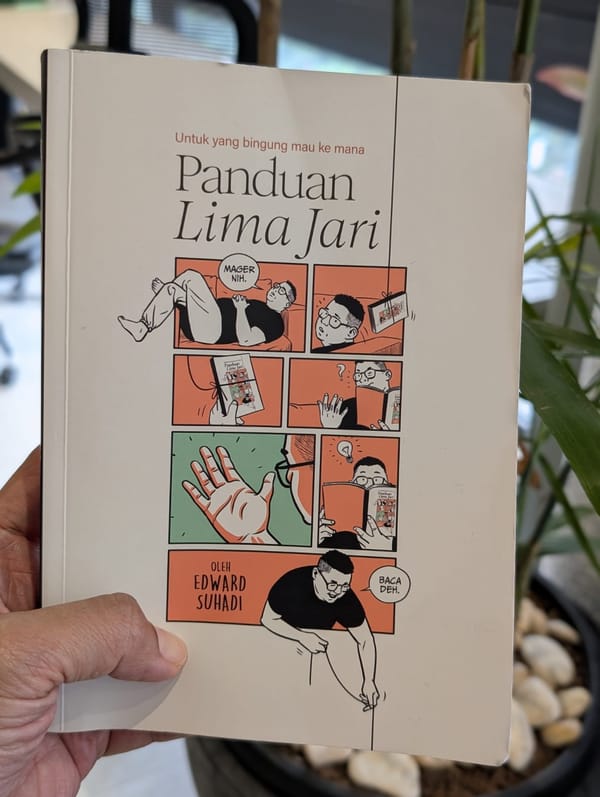Delivering Oxygen Machines during Delta's deadly wave

One of the highlights of 2021 for us was the privilege of being a volunteer for Oxygen for Indonesia. We wanted to share our story with you, our donors, and our partners, as a way to thank you. None of what we share below would have been possible without your swift generosity.
Together we raised more than seven million dollars for Oxygen and Covid related efforts. We delivered twenty-five hundred Oxygen Concentrators and increased the number of Oxygen PSA Plants in Indonesia from sixty-three to one hundred and one. Many, many people were involved, and below is our story.
In June, deaths from Covid were at 40,000 per day. So many of our volunteers had lost colleagues, friends, and loved ones. That was when we decided to set up Oxygen for Indonesia, with a mission to coordinate the fundraising and delivery of ten million dollars worth of oxygen equipment to hospitals in need.
OxygenforIndonesia consists entirely of volunteers and has no legal entity or bank account. Team members were cobbled up from startups and VCs one weekend in July. A few startup-initiated covid relief movements merged, WBW and IDPB volunteers provided the foundational team. More than sixty founders, VCs, and corporate partners joined that same weekend.
As work began, we uncovered a mountain of barriers to overcome to get the Oxygen equipment to the hospitals. For fundraising, for example, how would we create awareness from donors in Indonesia and abroad to raise funds for fundraising? How would the fund flows, taxes, and audits be run? For procurement: How would we decide which model to buy? How do we secure stock during a time when equipment demand was at an all time high? How would we get them through customs and get a tax exemption? For delivery: How would we decide which hospitals should be given the oxygen equipment? How would we ensure that the items are tracked and not stolen? And how would we train the hospital staff on how to use the equipment?
More and more barriers popped up that sometimes made us doubt whether we could meet our goals. Because our funding goal of ten million dollars was ten times the largest fundraising campaign that existed at the time, we were asked were we being realistic. When we had to take a half-a-million-dollar loan to book our first order because the money hadn’t come through, some wondered whether we could pay it back in time. When the flight to ship the concentrators kept getting delayed, we wondered if the concentrators would arrive early enough to matter. And when we needed to shift from Oxygen concentrators to Oxygen plants, which required installation, we wondered if our processes could handle the complexity.
Thankfully, leaders volunteered to divide up the different objectives early on. Timmy from Kitabisa and Andy Noya from Benih Baik joined forces to gather celebrities to raise funds. Alyssa, who works in Sequoia Capital led the fundraising process from corporate partners. David from Bukuwarung drove the global flow of funds and the audit process. Michael, Halodoc’s lawyer, led the vendor selection and ensured that training and installation were done properly at the hospitals. Alvin from AC ventures managed the customs and tax exemption process. And Robert from Waresix and Boris from Advotics coordinated the delivery and tracking of the equipment. Finally, Martin from East Ventures led the project management office, coordinating the Monday evening meetings and project timelines across streams. There were at least fifty more volunteers from over sixty companies that were part of these teams working despite their full-time jobs.
So you can imagine our relief when the chips started falling our way. Top partners from VCs and startup CEOs personally sent emails and WhatsApp messages and closed deals one after another. A YouTuber with 10 million followers, Atta Halilintar, created a fundraising page and was soon joined by nineteen other celebrities, resulting in more than twenty-four thousand individual donations. And, despite multiple delays, seeing the pictures of the Oxygen concentrators arriving at the airport gave everyone involved a morale boost. The heartfelt smiles of the hospital staff every time photos of the concentrators arriving appeared in our WhatsApp group became our micro addiction.

The openness for collaboration from Aqsha and his team, who were in charge of the country’s oxygen supply, was especially instrumental in navigating the complexity of the oxygen plants, which required the monitoring of construction at the local hospitals. The Minister of Health also provided a tremendous morale boost when he came to the warehouse to inspect the concentrators.
But perhaps the most rewarding aspect of the movement was that almost every movement related to the delivery of oxygen united into one. One movement after another rolled up into one fast-moving snowball working together. IDPB, Kitabisa, Benih Baik, Kadin, KBRI Singapore, YABB (Goto), Grab. Not having a legal entity or affiliation ended up working to our advantage because being neutral made it easy to partner. We wish we could claim foresight, but we simply didn’t have time to set anything up. Luck truly favored the bold in this case.
Despite having officially closed our campaign in October, the international fund flows and audits meant that we were only recently able to confirm that $7,2 million worth of Oxygen Concentrators and Generators were collected together with our partners. Some of these funds were raised directly by volunteers of OxygenforIndonesia. Partners like the Indonesian Embassy at Singapore, Goto, and Grab had raised the money directly but chose OxygenforIndonesia as an implementation partner.
These funds were used to deliver 2500 10 Lpm Oxygen Concentrators to xx hospitals. Thirty-nine Oxygen PSA Plants, each between 200–300 Lpm, will be delivered. These plants can be used to refill oxygen cylinders and serve as a hub for surrounding hospitals. To give some perspective, before the crisis, Indonesia had a total of 63 hospitals with Oxygen PSA plants.
Our work is not yet done. Our volunteers are still coordinating the installation of the remaining plants in case Omicron results in another spike in Oxygen needs. Whatever happens, we hope that these extra plants will increase Indonesia’s oxygen infrastructure in the long term, especially since most of the hospitals are in hard-to-reach areas.
More importantly, we’re grateful that you, the donors, and partners made Oxygen for Indonesia possible. We have included the full list of corporate donors here, except for a few who requested anonymity. As volunteers, your support allowed us to feel useful in a time of helplessness. But no matter whether you donated an hour of your time or one dollar, you helped Indonesians in a time of need. And for that, we will always be eternally in your debt.





